#muslin silk lehenga
Text
Pink Colour Leheriya Muslin Silk Lehenga With Unstitched Blouse | Kothari Sons

Adorn yourself in the exquisite Pink Colour Leheriya Muslin Silk Lehenga from Kothari Sons! This stunning ensemble comes with an unstitched blouse for a perfect fit. Elevate your ethnic wear game with this elegant piece. #KothariSons #EthnicWear #SilkLehenga #UnstitchedBlouse
0 notes
Text
Saree Storage Bags: Your Sarees' Best Friends
Sarees, with their intricate designs and timeless beauty, hold a special place in the hearts of many. Whether it's your grandmother's heirloom silk saree or the latest addition to your collection, taking proper care of these exquisite garments is essential. Enter saree storage bags, the unsung heroes of your wardrobe. In this blog post, we'll explore the wonders of saree storage bags, why they're indispensable for saree lovers, and how they can help you keep your sarees in impeccable condition.
1. Preservation of Elegance: Saree storage bags are crafted to shield your beloved sarees from dust, moisture, and environmental factors that could cause damage over time. These bags act as a protective cocoon, preserving the elegance and charm of your sarees for generations to come.
2. The Breathability Factor: Unlike plastic covers that trap moisture and can promote mildew growth, saree storage bags are often made from breathable materials like cotton or muslin. This allows your sarees to breathe, preventing musty odors and maintaining the fabric's integrity.
3. Dust and Pest Resistance: Dust and pests are the natural enemies of delicate fabrics. Saree storage bags provide an extra layer of defense, keeping dust at bay and protecting your sarees from potential insect infestations.
4. Organization Made Easy: Saree storage bags are designed to be user-friendly. They often come with clear sections, labels, or pockets, making it a breeze to locate a specific saree when you need it. No more rummaging through your closet in frustration.
5. Accommodating Different Styles: These bags are not limited to just sarees. They can accommodate various clothing items such as lehengas, salwar suits, and even delicate fabrics like chiffon or georgette, ensuring that all your treasured garments are stored with care.
6. Travel-Friendly Companions: Saree storage bags are a travel essential for saree enthusiasts. They keep your sarees neatly folded, preventing wrinkles during transit. Plus, their compact design allows you to pack multiple sarees without taking up too much luggage space.
7. Durability Matters: Investing in high-quality saree storage bags ensures longevity. Durable materials and robust zippers or closures mean your bags will withstand the test of time, safeguarding your sarees for years on end.
8. Stylish and Aesthetic: Who says practicality can't be stylish? Saree storage bags come in various designs, patterns, and colors. You can choose ones that not only protect your sarees but also add a touch of sophistication to your wardrobe.
9. Sustainable and Eco-Friendly: Many saree storage bags are made from eco-friendly materials like organic cotton or recycled fabrics, aligning with sustainable fashion choices. By opting for these bags, you contribute to a greener planet.
Saree storage bags are more than just a storage solution; they're guardians of your cherished saree collection. They ensure that your sarees remain in pristine condition, readily accessible whenever you wish to drape them. Whether you're preserving family heirlooms or safeguarding your latest designer purchase, investing in saree storage bags is a choice you won't regret. These bags not only extend the life of your sarees but also enhance your overall saree-wearing experience, making them a must-have accessory for saree lovers everywhere.
Visit: https://www.homestrap.com/products/transparent-saree-cover
0 notes
Text
Step into the World of Ethnic Indian Tradition with Fashion Dream

Even After The Immense Popularity Of Western Wear, Ethnic Wear Is Still Quite Popular In India. Women Of All Ages Still Love Wearing Their Sarees, Salwar Suits, Kurtis And Lehenga Cholis For Special Events And Festive Celebrations. Though Traditional Designs Have Made Way For Indo-Western Ones, Indians Still See Ethnic Wear As An Important Part Of Their Wardrobe.
At Fashion Dream, We Understand This And Bring A Collection Of Ethnic Wear Options That Have Seen Immense Popularity From Across The Country. Here Are Some Of Our Styles Which Have Seen Immense Popularity-
Rama Poly Muslin Digital Printed Readymade Straight Kurti

For An Elegant And Professional Look, Nothing Beats A Well-Fitting Kurti In Ethnic Wear. This One’s Designed With A Simple Digital Print In The Rama Colour That You Can Pair With Any Leggings Or Bottoms. This Kurti Is Available In All Sizes That Suit All Body Shapes. So The Next Time You Want To Get Ready Quickly For The Office, This One’s Surely Going To Save Your Day.
Poly Muslin Digital Printed Straight Readymade Kurti
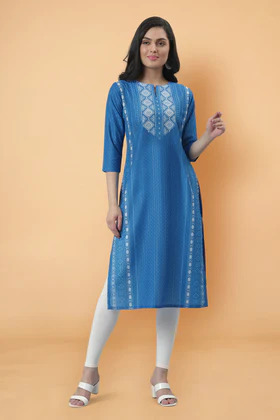
A Blue Kurti Never Fails To Impress. Whether You Have To Go For An Important Interview Or A Casual Lunch Date, You Can Always Style This Blue Kurti In Various Ways For A Gorgeous Appeal. Wear It With Leggings, Jeggings Or Even Your Jeans, Throw In Some Delicate Jewellery And Keep Your Hair Open For An Elegant Appeal.
Boys Mustard A Line Kurta With Pyjama Set

Whether It’s A Festive Occasion, A Party Or Even A Visit To Your Family Elders, Dressing Up Your Little One In Ethnic Wear For Boys Can Get You Loads Of Compliments. This One’s Designed With Simple Patola Print That Goes Well With The Mustard Kurta And Maroon Pyjama Set. The Next Time You Shop For Your Own Dresses, Add This To Your Cart For Your Little One.
Boys Teal Blue A-Line Regular Fit Kurta With Pyjama Set
This Designer Boys' Kurta Set Comes With A Minimalist Design That Works Anywhere. It Comes With A White Pyjama You Can Dress Up Your Son In For A Close Relative’s Wedding, A Festive Celebration Or Even A Party. Pair This Up With Some Simple Mojdis For The Best Results.
Light Green Batik Print Rayon Saree With Unstitched Blouse
Even Though Contemporary Designs Have Ruled The Roost In Saree Styles Lately, Traditional Motif-Based Sarees Will Always Remain Popular. This Batik Print Saree Is Designed To Elevate Your Personality, It Does Not Matter If You Have A Petite Body Or A Slightly Curvy One. With This, You Can Experiment With Your Choice Of Accessories And Jewellery As Per The Occasion. When It Comes To An Economical Style Solution, This Saree Is What You Need.
Red Bandhani Print Rayon Saree With Unstitched Blouse
There Is A Reason Why Women Of All Ages Still Love The Bandhani Print. Though It Has Been Around For Centuries, Its Simple Design Has Mesmerized Women Of All Ages For Centuries. This One Has Been Designed With Some Contemporary Design Cues To Make Room For Enhanced Versatility And Adaptability. You Can Always Add To This Look With The Right Jewellery For Any Special Occasion.
Green Bandhani Print Cotton Saree With Unstitched Blouse
Classical Designs Are Still Quite Popular With Women Of All Ages. This Bandhni Print Saree Has Been Designed For You To Wear To The Office And For Everyday Use. It Comes With A Slightly Off-Beat Take On The Traditional Bandhni Design, Allowing Women Of All Ages And Body Shapes To Wear It With Pride. You Can Always Accessorize The Look As Per Your Choice.
Women's Plus Size Light Green Dola Silk Jacquard Work Kurta Set With Dupatta
If You Are Looking For A Daily Wear Kurta Set, This One’s Designed Especially For You. This One Comes With A Unique Jacquard Design That Blends Seamlessly With The Light Dola Silk Kurti And Dupatta Set. You Can Wear This To Your Office Or For Any Special Occasion While Maintaining An Alluring Look.
Girls Green Taffeta Foil Printed Fit And Flared Maxi Dress
You Cannot Underestimate The Power Of Simple Designs. This Dress Comes With A Taffeta Foil Print On A Green Background That Gives Any Little Girl An Elegant Look. Its Ankle-Length Hemline Is Designed For Complete Elegance And Magnificence, Allowing Your Daughter To Run, Jump And Play Around At Any Event With Pride. Complete The Look With Some Simple Earrings Or Bracelets.
Girls Dola Silk Maxi Length Flared Foil Printed Dress
A Flared Dress Can Make Any Plain Jane Into A Cinderella. This Dress Is Designed To Do Just That, With Its Light Foil Print And Cold Shoulder Neck. Dress Up Your Little Doll In This Outfit For Any Party, Celebration Or Festival, And Let Her Get Her Share Of Compliments. You Can Never Go Wrong With A Printed Dress For Girls Under 12.
In the end
Indians Are Unique When It Comes To Embracing Fashion. Unlike Other Developing Countries, We Don’t Blindly Ape The West, But We’ve Created A Harmonious Blend Of Traditional Ethnic Wear And Contemporary Design Trends.
At Fashion Dream, We Understand Our Customers' Unique Trends And Preferences. We’ve Seen Immense Demand For Many Of Our Styles Exactly For This Reason. Sometimes, We Aren’t Even Able To Fulfil The Demand.
If The Designs You Chose Have Been Sold Out, Don’t Fret. Keep Following Us On Social Media And We’ll Let You Know Of All The Latest Re-Stocks And Fresh Designs We Offer From Time To Time. See You Soon!
0 notes
Text
THE INCREDIBLE EVOLUTION OF THE SALWAR KAMEEZ
Whether you call it the Salwar suit, Punjabi suit, shalwar kameez, or whatever you know, the salwar kameez is one piece of dress that holds a dear place and plays a significant role in Indian women's fashion. In this post, however, we’ll focus on the evolution of salwar kameez over time.
The Salwar Kameez is the traditional dress of the northern and Kashmir regions of India.
A Salwar Suit Design in Maroon
A Salwar Suit Design in Maroon
It’s also worn across the length and breadth of our almost 1.4-billion people country. Men also wear it although it’s more popular among women. The dress consists of a long shirt or tunic referred to as kameez and a trouser that could be wide, narrow, or baggy, known as the salwar. It may be paired with the dupatta; which is basically a shawl or scarf.
ORIGIN OF THE SALWAR KAMEEZ
The Salwar Kameez dress was introduced into Indian fashion and culture by the arrival of Muslims in South Asia around the 12th century. These dresses were later popularized by the Mughal Empire dynasty, a Muslim royal dynasty of Turkic-Mongol origin that ruled India between the 16th century to mid 18th century.
Legend has it that the Anarkali suit worn by courtesans of the Mughal palace was the earliest known form of Salwar Kameez in India. Courtesans of that era were often invited to the palace to perform the Mujra dress. The Anarkali-style dress they wore then was referred to as the Mujra dress. That dress was later renamed the Anarkali in honor of Lady Anarkali, one of the most prominent courtesans of the Mughal era.
An Anarkali Suit for Women
An Anarkali Suit for Women
Mughal women of that era made their dresses from the finest quality silk, velvet, brocades, and muslin. Different variations of the dress have evolved over time.
Punjabi Salwar Kameez blends color, embellishments, and embroidery into its design. The loose kurta, which could be long or short, is usually paired with a baggy salwar that often narrows as it extends downwards.
MODERN SALWAR KAMEEZ STYLES & DESIGNS
The Salwar Kameez worn today has evolved significantly from the Mujra dresses dancers wore to entertain princes within Mughal empire royal courts.
The modern Salwar Kameez now comes in different lengths and sizes as well as different styles and designs while still retaining its historical style and character. This evolution of Salwar Kameez has produced Salwar dresses of diverse kinds that include;
Anarkali suits: a long, flowy, frock style top kameez paired with salwar trousers or churidar
Patiala suits: consisting of a knee-length kameez paired with extremely baggy salwars stitched with pleats.
Sharara: a lehenga-like variation of the salwar kameez with trousers that are flared and wide-legged.
Gharara: this comprises a short kameez and a salwar that is fitted from the waist to the knee from where it then flares out to the toes.
Palazzo salwar: this is a Western take on Indian dress with a kameez top paired with loose palazzo pants that stay parallel to your legs.
Sharara Dress for Traditional Women
Sharara Dress for Traditional Women
Salwar Kameez dresses have come a long way through history. The evolution of Salwar Kameez in India paints a very interesting picture and to a large extent, provides an insight into Indian fashion culture as a whole.
Designers today keep dishing out new designs that continue to build on conventional styles and designs. This dress continues to be a favorite for women in India as well as Pakistan, Bangladesh, and Afghanistan, among others.
0 notes
Text
The Timeless Charm of Traditional Lehengas
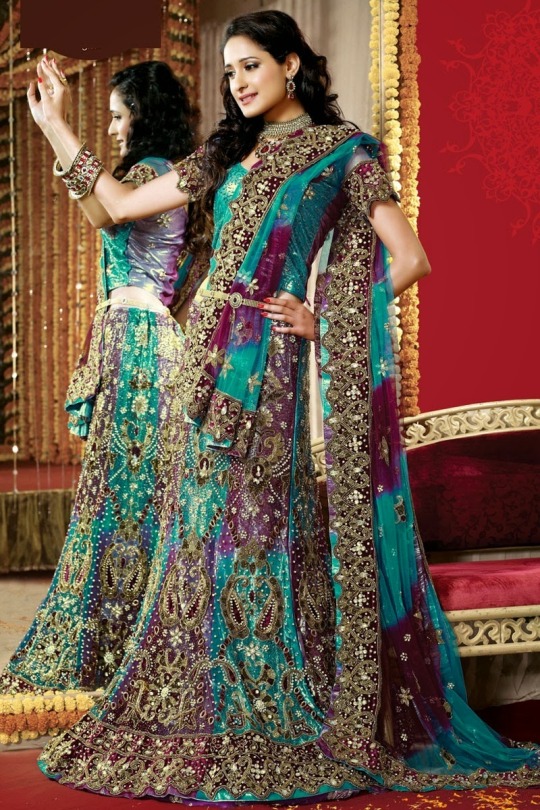
A bride wearing an exquisite silk lehenga exudes grandeur. The timeless outfit captures the hearts of millions of women worldwide.
Explore classic colors like reds and maroons, or experiment with more contemporary hues such as ivory or gold. Heritage silhouettes such as A-line or mermaid cuts can add timeless elegance to your bridal ensemble.
The Red Lehenga
Red bridal lehengas have long been considered one of the iconic Indian outfits, worn at weddings and special ceremonial events for special events like religious festivals. This elaborately embroidered ensemble, typically seen at Indian weddings and special ceremonial occasions, typically comprises a long pleated skirt secured at its waist by pleats that leave part of its midriff exposed and an attached blouse called the choli; further paired with an additional veil known as a dupatta that can be styled depending on its purpose or event.
Over time, bridal lehenga designs have changed with designer-driven trends and styles; yet their cultural significance and timeless elegance remains unchanged.
Lehengas are an ideal way for modern brides who wish to add elegance and tradition to their special day look. When combined with contemporary jewellery and heavy dupattas, they create an exquisite ensemble for an unforgettable moment on your big day! Sabyasachi offers this organza red lehenga which effortlessly combines contemporary with traditional, featuring foil applique work and mirror work floral motifs on its rich fabric with intricate embroidery; sure to make you feel like royalty on D-day!
The Chikankari Lehenga
Chikankari work is an absolute must-have for fashion enthusiasts, as its intricate artistry captures the craftsmanship of Lucknow. These beautifully hand-embroidered lehengas can make you stand out from the crowd at parties, weddings or family rituals and will make sure that you look elegant at any special event!
This beautiful embroidery features creepers, flowers, paisleys and jaali work inspired by Mughal architecture - as well as different fabrics such as cotton muslin silk georgette etc - in its designs. Cotton, muslin silk georgette are among those used and these versatile embroidered pieces can easily be combined with modern accessories for a fresh new look!
Discover an exclusive range of chikankari lehengas online by designers such as Varun Nidhika, Dolly J, Rachit Khanna and Samant Chauhan - among them Seema Gujral's stunning beige chikankari bridal lehenga for someone looking to elevate their ethnic style!
The Modern Lehenga
Lehengas are one of the few clothing items that never go out of style; rather, they evolve year after year thanks to new styles, patterns and silhouettes being introduced by designers like Neeta Lulla, Dolly J, Tarun Tahiliani and Pallavi Mohan that keep reinventing them and staying ahead of fashion trends. In particular, their popularity among brides for weddings and cocktail parties continues to skyrocket! Thanks to these showstopping designs being produced by such fashion giants as these; lehengas have taken over Indian fashion by storm!
Modern ghagra cholis made their comeback in the 1990s thanks to popular Bollywood films with elaborate wedding scenes, as well as designer fashion shows featuring them. non bridal lehengas , lehenga-choli ensembles are part of every bride-to-be's dream wardrobe.
Design of lehenga depends on its region. For instance, West Indian lehengas are distinguished by vibrant colors and intricate embroidery patterns, as well as mirror work or tie dye techniques to reflect their rich heritage.
The Red Bridal Lehenga
Red bridal lehenga, commonly known as 'ghagra choli', is an iconic Indian bridal ensemble and an auspicious symbol for love and auspicious beginnings - making it the ideal choice for traditional Indian wedding ceremonies.
Traditional red bridal lehengas feature intricate embroidery and lavish embellishments, and are usually worn together with matching blouse and dupatta for brides who wish to embrace their cultural roots.
Alternatively, opt for something lighter like a shimmering georgette lehenga - this fabric provides fluid movement and comfort against sensitive skin, making it the ideal option.
For a contemporary take on classic bridal attire, try opting for a mermaid or fishtail lehenga. This style flares below the knee while hugging close to your body and is tailored specifically to contemporary brides looking for timeless elegance. Add extra flare with embellished hemlines or metallic accents.
1 note
·
View note
Text
Indian Ethnic Wear Collection: Contemporary Twists by Rang Gali
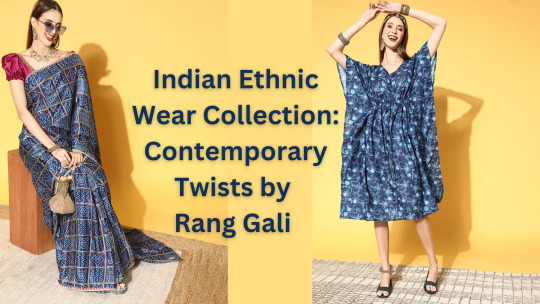
Welcome to the world of Rang Gali, where elegance meets style and tradition blends with modernity. We take immense pride in presenting a breathtaking collection of quality Indian ethnic dresses, sarees, lehenga cholis, kaftans, dupattas, and more. Our aim is to empower every woman with the confidence that comes from embellishing mesmerizing ethnic wear. Let's explore our diverse range of products and their characteristics
Indian ethnic Dresses
Discover the beauty of our dresses, where contemporary designs merge seamlessly with traditional patterns. Each dress is crafted with premium fabrics and meticulous attention to Indian ethnic styles, creating a true work of art. Perfect for any occasion, our collection offers a wide range of styles and cuts to flatter every body type with comfort and durability in mind.
Sarees
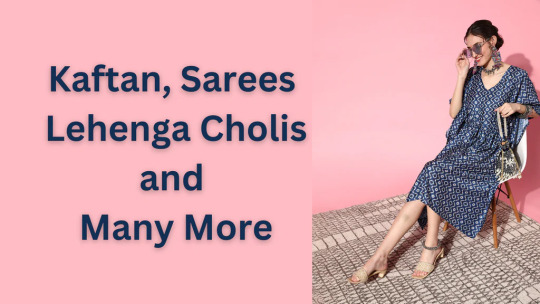
Sarees are the epitome of grace and beauty in Indian fashion. At Rang Gali, we offer an exquisite collection of sarees that celebrate the rich heritage of Indian textiles. Made from chinon silk , our collection will leave you spoilt for choice.At Rang Gali, We offer Variety of colors and patterns that cater to every occasion
Lehenga Cholis
For weddings and special events, our lehenga cholis are the epitome of elegance and grandeur. Each lehenga will make you feel like royalty. Customizable designs with choli made from viscose Rayon, lehenga made from poly silk and Dupatta of poly chiffon to match your preferences and theme for your Indian ethnic look.
Kaftans
Our Kaftans offer comfort without compromising on style. Whether you're lounging at home or enjoying an Indian party, our kaftans will make you feel relaxed and chic. They come in a variety of prints and designs, catering to your individual style. From Silk Crepe, Organic Cotton, Chinon Silk, and Muslin we offer stylish and comfortable products for a trendy look. Versatile designs that can be worn for casual or Indian ethnic occasions.
Dupattas
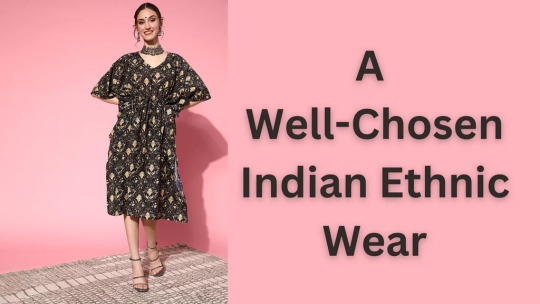
A well-chosen dupatta can elevate any outfit. Our collection of dupattas complements dresses, sarees, and lehenga cholis perfectly. Prepared from Bandhej silk , each dupatta adds an extra layer of elegance to your ensemble. Our dupattas offer Versatile styling options, making them suitable for various occasions.
Wrapping Up
At Rang Gali, we are dedicated to providing our customers with the finest quality Indian ethnic wear. Each product in our collection is a testament to our commitment to style, and customer satisfaction. Embrace the allure of traditional Indian fashion with Rang Gali- your ultimate destination for breathtaking Indian ethnic wear.
0 notes
Text
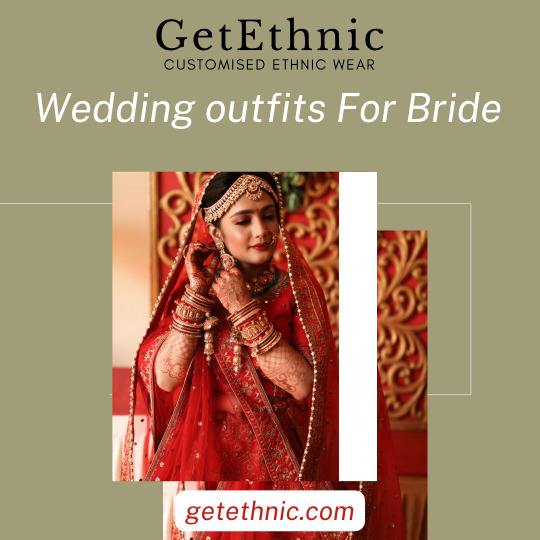
Unforgettable Moments in Indian Bride Dresses: Capturing the Essence of Love and Beauty
The wedding ceremonies in India are famous for their lavishness, splendor, and age-old customs. When all eyes are on the bride, she deserves to feel as beautiful as she looks on her wedding day. Traditional Bridal outfits has changed little throughout the years, but each region has contributed its own twist. These garments are both classic and trendy due to their use of color and embroidery.
Exactly what does an Indian bride wear?
Indian brides traditionally wear elaborate and colorful outfits during their weddings. There are many different parts to it, and they all have their own special meaning and flair. The saree, a long drape that the bride wraps around herself in a variety of ways according to regional customs, is the most significant component.
The saree is typically worn with a blouse, called a choli, which may or may not have sleeves, depending on the occasion. Similarly sophisticated to the saree is the blouse, which is adorned with elaborate embroidery and ornaments.
Jewelry is an integral aspect of any Indian bride's ensemble. Jewelry, including necklaces, earrings, bracelets, and bangles, is an essential part of the bride's ensemble. It's a symbol of success and fortune while also upping the glam factor.
Veils or dupattas (length scarves) and shoes (often embroidered sandals) are two further examples of such items. The ensemble wouldn't be complete without these accessories, making them ideal for a contemporary princess who values heritage without sacrificing style.
Indian Wedding Attire: A Brief History
The tradition of Indian bridal attire has a long and interesting history. Wedding clothing in India has changed over time to represent the country's many different cultural traditions.
The wedding ceremonies of ancient India were low-key celebrations. Weddings, on the other hand, grew increasingly elaborate as society as a whole became wealthier, as a means of displaying said money and position.
Wedding gowns with a lot of silk brocade and gold embroidery were popular during the Mughal era in the 16th century. Most of the time, these clothes were from Turkey or Persia.
In the 17th century, as India opened up to European trade, European styles began to seep into traditional Indian wedding garb. Muslin fabric, imported by the British, was utilized to create airy saris, which quickly became the garment of choice for brides.
Indian Wedding Outfits now combines elements of the past with the present. Many brides still go for elaborate lehengas or sarees, but some are choosing simpler styles that better express themselves.

Dresses Worn by Indian Brides More Often Than Not
Exquisite stitching, elaborate motifs, and brilliant hues are hallmarks of traditional Indian wedding attire. Sarees, lehengas, salwar kameez, and Anarkali suits are typical choices for brides in India.
Sarees are a classic that will always be in vogue. Silk, chiffon, and georgette are just some of the textiles that are commonly used, and they can be draped in a variety of styles that are specific to different parts of India. To shine on their wedding day, many brides pick sarees with elaborate gold or silver work.
Bridal lehengas are also very popular. The combination of a blouse and a dupatta with one of these long skirts is fit for a princess, making it an ideal bridal outfit. Whether the bride prefers a more classic or modern look, there is a Lehenga out there for her.
For a more laid-back look than traditional sarees or lehengas, a salwar kameez is a great choice. Salwar, baggy pants, and kameez, a tunic-like top that can be embroidered or printed, make up this traditional costume.
Anarkali suits' rising appeal might be attributed to their princess-like form; they flare out gracefully from the waist. The necklines and hemlines of these suits are sometimes embellished with elaborate embroidery for a glamorous touch.
Indian brides who want to combine classic style with cutting-edge bridal fashion have a plethora of alternatives available to them. There is a wide variety of bridal wear available, from sarees to Anarkali outfits.
Conclusion
Summarizing, Indian bridal attire is a stunning representation of India's illustrious cultural history. While still steeped in heritage, these exquisite clothes have also been updated to reflect current bridal fashion. Every bride can find an ensemble that speaks to her individuality and sense of taste, from colorful lehengas to elegant sarees.
Indian bridesmaids outfits is also on the rise because of the positive attention it has drawn to the wedding industry. They are great for any wedding event and accurately portray the richness of Indian culture with their traditional yet contemporary patterns.
The evolution of Indian bridal wear from basic fabrics draped over the body to elaborate ensembles embellished with embroidery, jewels, sequins, and stones is documented throughout history.
0 notes
Text
Want to buy some trendy kurtas. Click here!
India is a country of rich customs heritage and diversity, boasts a plethora of ethnic wear that varies significantly across different regions of country. Each region in India has its unique style of traditional clothing that is influenced by its geography, climate, history, customs, and religious beliefs. From vibrant sarees to elegant lehengas, from intricately embroidered salwar kameez to colourful turbans, Indian ethnic wear is a reflection of country’s traditions and craftsmanship. “Indian ethnic wear for women is like a timeless treasure that never goes out of style, always exuding elegance and grace”. “Wearing ethnic wear is not just about following a trend, it’s about carrying forward our culture legacy with pride”. Let us explore some of the popular regional Indian ethnic wear.

North India: North India, comprising states like Punjab, Rajasthan, Uttar Pradesh and Jammu and Kashmir, is known for its colourful and flamboyant ethnic wear. Punjabi suits also known as salwar kameez ,are popular in Punjab and are characterized by their bright colours, heavy embroidery called (phulkari) and loose fit. Rajasthan is famous for its royal poshak, which includes a long skirt called (ghagra) and a short blouse known as choli, and a colourful dupatta. The ghagra choli is adorned with intricate mirror work, embroidery, and patchwork. Uttar Pradesh is known for its traditional lucknowi chikankari suits, which are made by the hand embroidery done on delicate fabrics like muslin and chiffon. Kashmiri ethnic wear includes the phiran, a loose, long tunic, and pashmina shawals, known for their fine artisanship and intricate designs.
South India: South India, consisting states like Tamil nadu, Kerala, Karnataka and Andhra Pradesh, is known for its graceful and traditional ethnic wear. The kanjeevaram sarees from Tamil nadu are famous for their rich silk fabric, bright colours, and intricate gold zari work. Kerala is known for its kasavu sarees, which are made from hand-woven cotton and are typically off- white with golden borders. Karnataka is famous for its Mysore silk sarees, which are known for their fine silk, vibrant colours, and intricate motifs. Andhra Pradesh is known for its pochampally sarees, which are characterized by their vibrant tie-and dye patterns and bold colours.
East India: East India comprises states like west Bengal, odisha, Bihar and Assam, is known for its unique and diverse ethnic wear. The traditional sarees of west Bengal such as baluchari and taant are known for their intricate weaving patterns and elaborate borders. Odisha is famous for its sambalpuri sarees, which are known for their intricate ikat patterns and vibrant colours. Bihar is known for its madhubani sarees, which are hand-painted with intricate motifs inspired by nature and mythology. Assam is famous for its mekhela chador, which is a two-piece garment consisting of a draped skirt and a shawl-like upper garment.
West India: West India comprising states like Gujarat, and Maharashtra, is known for its colourful and vibrant ethnic wear. The traditional attire of Gujarat includes the colourful and embroidered gharchola sarees and the bandhani sarees, which are known for their tie and dye patterns. Maharashtra is famous for its traditional paithani sarees, which are known for their rich silk fabric, intricate zari work, and colourful motifs.
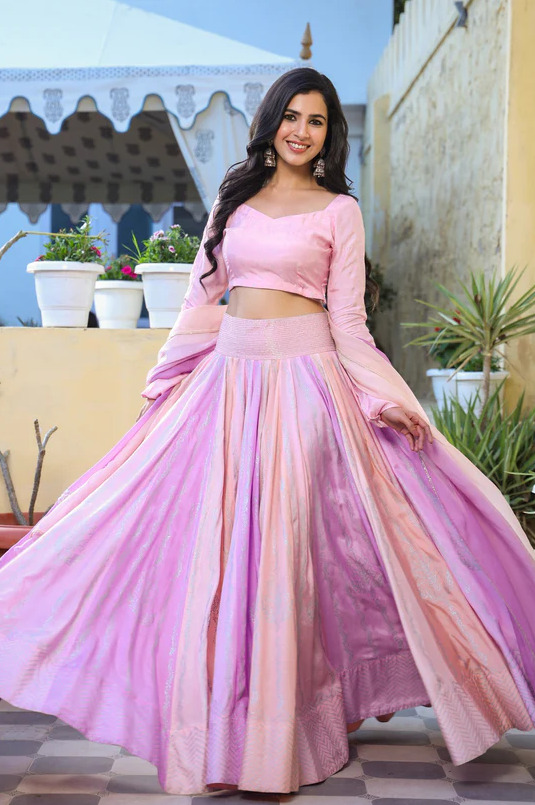
In addition to all these kinds of different attire, block print kurta is also a traditional Indian garment known of its eternal appeal. The art of block printing has been practiced in India for centuries, and it involves using hand-carved wooden blocks to create intricate patterns on fabric. This kurta is a popular choice for casual and formal wear, and it is appreciated for its beauty, comfort, and cultural significance. This kurta is typically made from natural fabrics such as cotton, silk or linen, which make them comfortable and breathable, perfect for hot and humid climate of India. The fabric is first pre-washed and then dyed in a base colour. Once the fabric is, dried skilled artisans use hand-carved wooden blocks to apply different patterns and designs onto the fabric using natural dyes. These wooden blocks are dipped in the dye and then carefully stamped onto the fabric in a repetitive pattern, creating a beautiful and symmetrical design. One of the exclusive features of block print kurta is the intricate and mesmerising patterns that are created using the wooden blocks. The patterns can range from simple geometric shapes and floral motifs, to the more complex designs, which are inspired by the nature, culture and traditional art forms. The beauty of block print kurta sets lies in the precision and artistry of the block printing process, which requires skill and expertise to achieve flawless results. These kurtas can be paired with leggings, palazzos or jeans for casual and chic look, or worn with traditional bottoms such as salwar or churidar for a more conventional and formal appearance. These kurtas is often embellished with additional detailing such as buttons, tassels or embroidery, which adds to its charm and elegance. These kurtas holds the cultural significance in India and promotes sustainable fashion practices. With its ageless appeal and creative beauty, these kurtas continues to be a beloved choice for those who appreciate traditional and handcrafted garments.
0 notes
Text
Linen saree | Dailybuyys
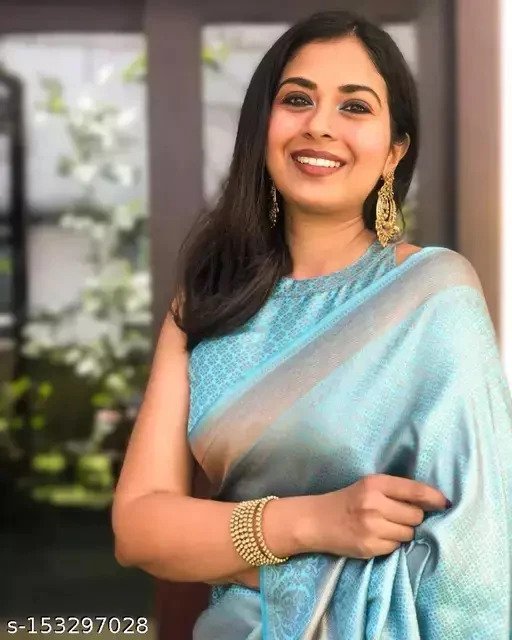
Black White Pure Silk Mark Certified Murshidabad Silk Sarees.Best Online Fashion Shopping for Women's Clothing from "dailybuyys.com". Sarees both Handloom and Designer,Silk,Cotton Handpainted/printed and Block printed,Salwar,Kurti,Lehenga,Bengali Sarees,Linen,Chanderi,Malmal Batik,Khadi,Muslin,Ghicha,Jamdani,Khesh,Kalamkari,Coton Silk,Georgette,Net,Crepe,Bhagalpuri ,Party Wear 🔴 Actual Price You can see after the product adding in your cart
+91 8777422136
https://dailybuyys.com/
#Linen saree#Hand painted pure silk saree#Blouse online#Designer blouse online#Tussar silk sarees#Handloom cotton sarees Online#Tussar Silk Sarees Online#Block-printed-sarees for women#Handloom Pure Silk Sarees online#Khadi Cotton Sarees Online in India#Best Cotton Silk Sarees Online#Mirror Work Cotton Sarees In India#Party Wear Sarees#Hand Painted Pure Silk Sarees#Khadi Cotton Sarees#Banarasi Silk Sarees online#Kanjivaram Silk Sarees Online#Raw Silk Sarees#Kota Silk Sarees#Kalamkari sarees online#Embroidery sarees online#Linen silk saree online#Madhubani Silk Sarees online#Cotton silk sarees online
1 note
·
View note
Text
Exotic weaves of India
India, a land known for its lush textiles, celebrated weaves and quintessential embroideries, tells us a tale of its ancient era, a tale of rich civilisations, a tale of folklores and a tale of unparalleled art. Weaving has been a constant artisanship that has been transmitting from generations to genera- tions since time immemorial. Whether it is the modest Khadi (a social fabric) or the beauty of chikankari, or the smooth silk or the brocade, or the cotton, India is a force to reckon. India ex- hibits an array of heritage techniques like Bandhini, Patola and Kalamkari to name a few, thus adding to its splurging textile market with worldwide buyers.
Today, the fashion designers are truly making conscious efforts to adapt the ancient wisdom of weaving and offering authentic crown-pieces to the world at large. Infact, there are a few exotic weaves of India that have been considered the finest work of prehistoric art that our older genera- tions could gift us. These weaves are an exemplary testimony to the art and to the weavers who have put their sentiments in every step of the way -
1. JAMDANI
A hand woven loom, Jamdani is a tender and subtle fabric largely formed of cotton and was also termed as muslin in the primitive era. It has noteworthy floral and angular motifs beautifully wo- ven through a discontinuous weft technique and embroidery to create umpteen designs. This weave looks ethereal in its delicacy. Threads of gold, silver or other shades are used to create pat- terns, most famous being the paisley, duria, bootidar, tersa and panna hajar. Weaving of Jamdani is very labour intensive as it requires time and precision to create exclusive fabrics, sarees, lehengas and stoles.
Originated from Dhaka (undivided Bengal region and now in Bangladesh) during the Mughal era, and originally known as ‘Dhakai’, Jamdani was adored by the Mughals who introduced them to Bengal. Also, numerous archival data and folklores, suggested that Jamdani was be dated back to the first century. However, the world knew about this wonder mainly during the reign of Akbar and Jahangir in 15th and 16th century respectively. The base of Jamdani was muslin (most fine cloth ever created) and plentiful designs were created for patrons such as Nur Jahan and other queens. The flowered muslin became the Jamdani and was seen a lot until the early 19th century. Later, due to the destruction by erstwhile East India company of the Indian textile industry, the villages that once exulted the making of Jamdani were destroyed and this led to a stark decline in the availability of this weave. This gap was spotted by the talented designers of today and they recre- ated this weave with new characteristics keeping its history immortal.
An initiative of goodness, rooted in tradition, this ancient wisdom of art has a very special room in the hearts of our skilled artisans and Weaver Story has been successful in resurrecting this. We have played around with the patterns, compositions and inspired the artisans to realise the true potential of the looms, thus creating numerous reinterpreted designs of jaal, buti and cutwork in shades and hues of today.
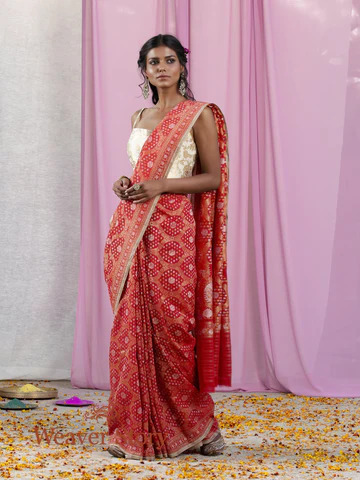
Weaver Story proudly offers these gems of the past, for you to indulge in.
Explore - https://weaverstory.com/pages/search-results-page?q=jamdani%20saree
2. IKAT-
The term ‘Ikat’ comes from the origin of Malay-Indonesian word for ‘tie’ and was introduced first to the Europeans during the early twentieth centuries and other parts of the world. This artistry flourished as a spectator of worldwide trading practices and had traversed through some notable trading routes. However, it is said that, in India sometime in the 7th century, murals wearing Ikat
patterned garments were seen in the caves of Ajanta and Ellora. Ikat is a thread itself that is dyed through natural or synthetic colours depending on its usage. And through this beautiful Ikat thread, Ikat fabrics were weaved, that had a profound character and came in appealing colour tones. Today, we see voluminous designs of this fabric in the length and breadth of India in appar- el, home furnishing and accessory categories.
The cultural fabric of India is an Ikat fabric as it has so much diversity in every 500 kms we travel within India. Every weave tells us a fable of rich craftsmanship and sentiments of the culture. The primary designs seen on Ikat are abstract, geometrical and floral. The abstract motifs can come from any kind of inspiration that the weavers or the designers get, geometrical patterns are stripes, chevrons, diamonds to name a few and florals patterns cover the entire flora and fauna.
The process of making the Ikat fabric is extremely unique and earthed in Indian tradition. Tie and dye techniques are employed before the actual weaving starts. And this process is repeated many times in order to form a lot of colours and a symphony of patterns. Single and double Ikat are mainly produced. The single Ikat process is where either the warp or weft carries the coloured pat- terns and other one is a single colour. ‘Double Ikat’ uses a convoluted technique where both the warp and weft are dyed before weaving them. The master weavers who create Ikat, are extremely adept and this process takes a few months to make one end-piece.
The most exotic designs of Ikat are seen in Orissa (Sambalpuri Ikat - mainly curly and circular de- signs), Gujrat (Patola or the Patan Patola - mainly floral and geometrics patterns) and Andhra Pradesh (Pochampally Ikat - mainly intricate and symmetric designs).

At Weaver Story, we deeply care about the ancient weaving methods and heritage Indian art. We strive to preserve and advocate it. Checkout our vibrant collection of Patolas and get mesmerised
- https://weaverstory.com/collections/patola-sarees-from-gujarat
3. TANCHOI
Banarasi sarees are India famous for its lustre and keep. They come in abundant weaves and pat- terns so much so that we forget the world while exploring them. Banarasi Tanchoi is one of a few exotic weaves of proud India that exudes opulence and illume in every inch of it. Each piece is po- etry, a story to unravel. Weaver Story produces ethereal creations of Sarees and Lehengas with detailed Tanchoi artwork. They feature gorgeous motifs and pretty colours, blended evenly - https://weaverstory.com/pages/search-results-page?q=tanchoi%20saree
Tanchoi and the holy city of Varanasi (Banaras) are closely bonded and their lineage dates back to China. From there, the Parsi traders introduced this silk to India during the 18th century. It is be- lieved that, three weaver brothers from Surat were sent to China by a Parsi merchant to learn this art of silk weaving. And, when they returned they coined the term ‘Tanchoi’. ‘Tan’ means three and ‘Choi ‘ is a name adaptation of their Chinese teacher’s name . Sadly, during the early 20th century, much lighter fabrics like Georgettes and chiffons started to emerge and became a threat to silk. But, as they say history repeats itself, the silk started to see the light of the day and many such fab- rics started to get revived through Banarasi weavers and designers. Tanchoi was resurrected and became a hit yet again.
Today, the women are in awe of this weave. It’s making involves single or double warp and two - five colours on the weft, hence making it a complex process. Banarasi Tanchoi comes in a lot of ex- tremely popular varieties such as Satin Tanchoi (luminous appearance), Satin Jari Tanchoi (amal- gamation of gold and silver threads), Mushabbar (gives a vibe of a dense forest and its greenery), Atlas or Gilt (heavy in weight and is pure satin full of zari work) and Jamavar (elaborate motifs with heavier silk and weaves). These sarees are highly coveted by the Indian women. And the icing on the cake is that our current PM Narendra Modi, gifted a Tanchoi stole to Queen Elizabeth II in the year 2015 in the UK. This explains the fondness of Tanchoi’s rich ingrained heritage and grace.
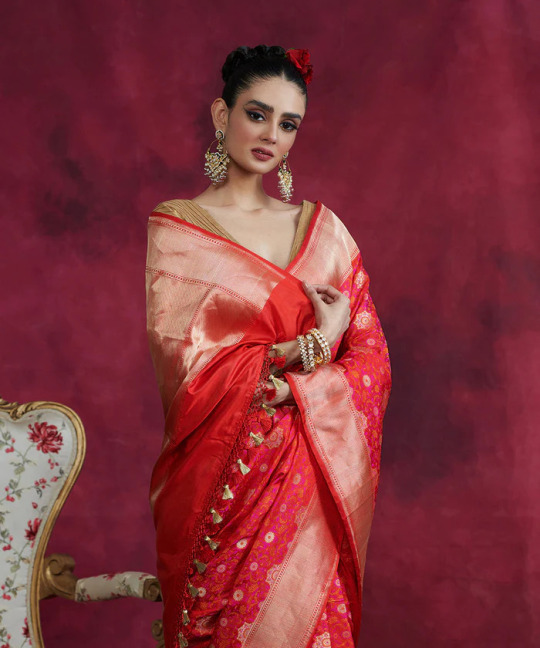
4. CHANDERI
The captivating charm of Chanderi, it’s lucent appearance, and feather light mass, Weaver Story is awestruck with this weave. We have seriously indulged in this design and handcrafted a lot of pleasing outfits. We love the artisanal craft that is meticulously depicted in the fabrics. Chanderi Sarees, while depicting our chronicles, are a delight to wear.
The glorious Mughal reign introduced Chanderi to the world. Apparently, this cloth was sent to Emperor Akbar and he was surprised to see its quality . Due to this, ‘karkhanas’ were established to weave Chanderi which later got shut down. Also, a town named Chanderi in Madhya Pradesh
seem to have adopted this weaving culture of the yore years and continued its legacy. This town was primarily a weavers town where more than half of the population weaved Chanderi. It is also believed that this fabric was introduced by Lord Krishna’s cousin Shishupal during the Vedic Period. This stretch of cloth was considered royalty when worn.
Chanderi weaves are made using cotton, silk and zari, intricately intertwined so as to give a grace- ful gleam of shine. Surreal motifs in floral and abstract shapes are created in a myriad of colours. They are sometimes coated or bordered with gold or silver colours in order to accentuate the ap- pearance of the sarees. Even Salwar kameez and lehengas come out very well in Chanderi.
Weaver story has designed charming pieces using Chanderi for you to adorn on your special occa- sions - https://weaverstory.com/collections/handwoven-chanderi-sarees
We sincerely pay homage to all the artisans, weavers and to our heritage that has been passed onto us and has deeply resonated with us. Weaver Story continuously strives to revive historical art and culture of our beloved nation.
1 note
·
View note
Text
Latest Floral Print Lehenga For Sister Wedding
Latest Floral Print Lehenga For Sister Wedding
New Arrival Latest Floral Print Lehenga For Sister Wedding Made With Vaishali Silk Fabric And Fully Floral Print Design And You Can Wear it With Muslin Silk Dupatta.
Product Description Of Lehenga For Wedding Guests:
Lehenga Detail:
Fabric: Vaishali Silk Fabric
Work: Digital Leheriya Print Work With Two Layers Can Can and also Stitched with Canvas
Length: 41 Inch
Flair: 4.10 Meter
Size: Up To…
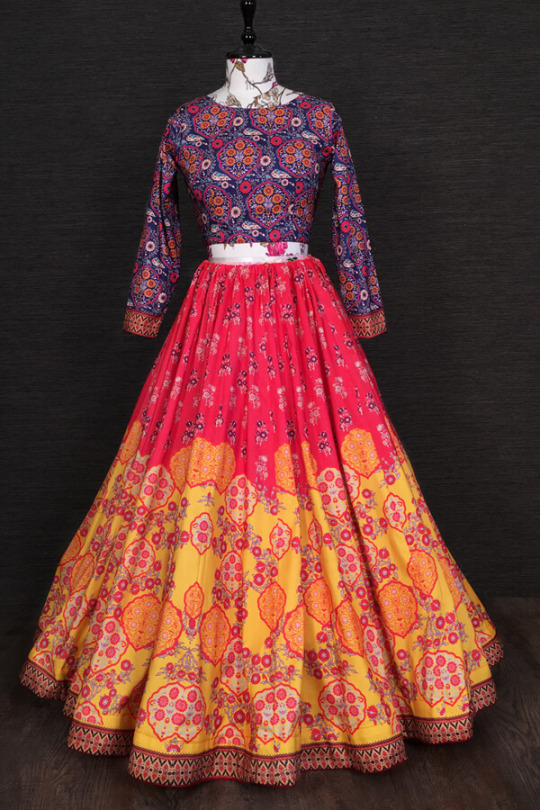
View On WordPress
1 note
·
View note
Text
Saree Storage Bags: Your Sarees' Best Friends
Sarees, with their intricate designs and timeless beauty, hold a special place in the hearts of many. Whether it's your grandmother's heirloom silk saree or the latest addition to your collection, taking proper care of these exquisite garments is essential. Enter saree storage bags, the unsung heroes of your wardrobe. In this blog post, we'll explore the wonders of saree storage bags, why they're indispensable for saree lovers, and how they can help you keep your sarees in impeccable condition.
1. Preservation of Elegance: Saree storage bags are crafted to shield your beloved sarees from dust, moisture, and environmental factors that could cause damage over time. These bags act as a protective cocoon, preserving the elegance and charm of your sarees for generations to come.
2. The Breathability Factor: Unlike plastic covers that trap moisture and can promote mildew growth, saree storage bags are often made from breathable materials like cotton or muslin. This allows your sarees to breathe, preventing musty odors and maintaining the fabric's integrity.
3. Dust and Pest Resistance: Dust and pests are the natural enemies of delicate fabrics. Saree storage bags provide an extra layer of defense, keeping dust at bay and protecting your sarees from potential insect infestations.
4. Organization Made Easy: Saree storage bags are designed to be user-friendly. They often come with clear sections, labels, or pockets, making it a breeze to locate a specific saree when you need it. No more rummaging through your closet in frustration.
5. Accommodating Different Styles: These bags are not limited to just sarees. They can accommodate various clothing items such as lehengas, salwar suits, and even delicate fabrics like chiffon or georgette, ensuring that all your treasured garments are stored with care.
6. Travel-Friendly Companions: Saree storage bags are a travel essential for saree enthusiasts. They keep your sarees neatly folded, preventing wrinkles during transit. Plus, their compact design allows you to pack multiple sarees without taking up too much luggage space.
7. Durability Matters: Investing in high-quality saree storage bags ensures longevity. Durable materials and robust zippers or closures mean your bags will withstand the test of time, safeguarding your sarees for years on end.
8. Stylish and Aesthetic: Who says practicality can't be stylish? Saree storage bags come in various designs, patterns, and colors. You can choose ones that not only protect your sarees but also add a touch of sophistication to your wardrobe.
9. Sustainable and Eco-Friendly: Many saree storage bags are made from eco-friendly materials like organic cotton or recycled fabrics, aligning with sustainable fashion choices. By opting for these bags, you contribute to a greener planet.
Saree storage bags are more than just a storage solution; they're guardians of your cherished saree collection. They ensure that your sarees remain in pristine condition, readily accessible whenever you wish to drape them. Whether you're preserving family heirlooms or safeguarding your latest designer purchase, investing in saree storage bags is a choice you won't regret. These bags not only extend the life of your sarees but also enhance your overall saree-wearing experience, making them a must-have accessory for saree lovers everywhere.
Visit: https://www.homestrap.com/products/transparent-saree-cover
0 notes
Text
5 Reasons Why Palazzo Suits Are a Wardrobe Must-Have
Palazzo suits - or pants styled bottoms Indian suits are a generally spotted outline nowadays. From their starting points as Pakistani suits to present day, fancier forms, these super stylish palazzo sets are an inclination of each and every age gathering and way of life. Not exclusively are these sleek and savvy, they additionally are agreeable and simple to wear for long days.
These erupted bottoms come in various varieties. A customary palazzo suit has a free yet straight-cut base. A chime base has a more extensive hemline while a sharara base is fitted upto the knee and afterward erupts wide. These plazo bottoms can be plain, printed, weaved or even layered and unsettled. They are normally matched with a short kurta to frame a customary palazzo suit troupe, but with the pattern of combination wear getting up to speed these days plazo bottoms are likewise worn with crop tops, rain coat and coat layers and even with western style pullovers and shirts.
With such countless varieties of salwar suits like churidar suits, pant suits, Patiala suits and indo-western lehenga suits that are so promptly accessible on the lookout, designer palazzo suit certainly have an edge over different variations hence making them one of the most sought after ethnic wear outlines.Here are a few reasons with respect to why these erupted pieces of clothing should be in your jazzy ethnic closet.
You can wear them anytime, anywhere!
A palazzo suit is without a doubt a flexible piece of clothing which can be carted away for office gatherings, shopping trips, kitty gatherings and in any event, for great festivals like weddings. For your everyday errands, you can get a cotton suit with erupted bottoms while for a wedding function a silk or georgette sharara suit point by point with stunning doodads will make an extraordinary pick.
The comfort advantage
Whether you're out on a singing summery evening or in a local party, plazos permit you to feel calm with their simple aspects. When contrasted with tight churidar suits and Patiala suits that have extravagantly creased bottoms, a palazzo suit is a brilliant harmony between solace and style.
Perfect for all figure types
Flared bottoms will generally level out the defects of a weighty lower body. Then again they will more often than not have an incompletely expanding impact for thin women. So regardless of what your figure type is, a palazzo suit is certainly implied for you!
It’s the ‘in’ thing
Palazzo suits were very well known in India during the 1970s and 1980s. As this pattern has been reused, more established ladies have been especially snared to it while the youths have embraced it as a possibility for contemporary ethnic wear. As this pattern has been seeing expanding support with time, it recommends that palazzo suits are here to govern the ethnic design world for essentially two or three additional seasons. As a design canny woman you would like to have the most recent stuff in your storeroom and that is sufficient motivation to go a little overboard on some astounding palazzo suits! You can likewise get them online at great costs.
The game of mix and match
While a churidar, salwar or a pant base must be worn with a medium to long length kurta, a palazzo base can be matched with a tank top, peplum or kedia style shirts and different sorts of tops as well as layered with shrugs, coats and rain guards. So with one palazzo suit, you can make many looks and continue to shock your companions with another closet each time!
Arykaa has a Classic scope of Designer palazzo suit sets that you can arrange on the web. There are so many different decisions that you will make some intense memories picking palazzo suits online. You can search for clothing as per your decision of outfit shape, variety, size, texture, neck area, and significantly more. Arykaa gives georgette, delicate net, organza, Resham, zari work, muslin computerized printed, string work, and similarly; this is where you think that it is all. Purchase planner palazzo suits, Kurti, straight suits, party wear suits, and substantially more planned by the absolute best with head-turning plans.
0 notes
Photo
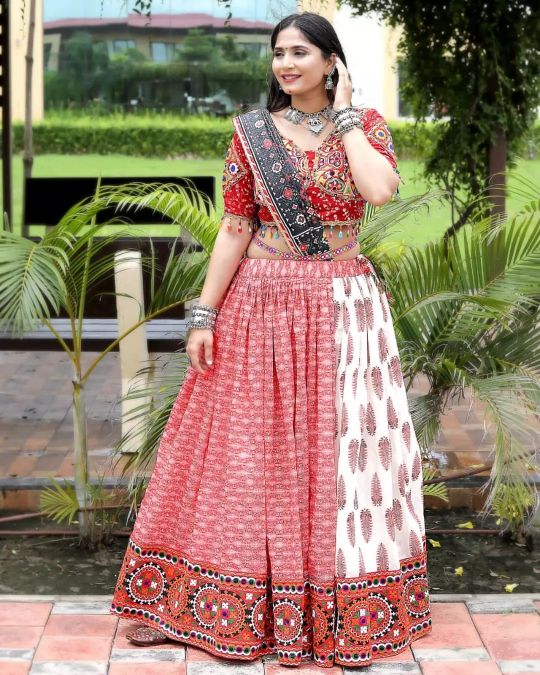
PREMIUM QUALITY✅ *Red Lehenga (Full stitched)* *🪷Lehenga:- (Full stitched)* Fabric :- Muslin Inner :- Crape Colour :- Off-White ,Red Length :- 44" Size :- 40" Work :- Heavy Digital Print + Heavy Embroidery Thread Flair :- 5 MTR *EXTRA WAIST BELT* *🪷Blouse :- (Full stitched)* Fabric :- Cotton Print Inner :- Cotton size :- L (40) Extra Margin Back Side :- Dori Opening Work :- Heavy Chain Stitch Thread + Ready Patch + Ready Codi Lace Blouse Colour :- Red *🪷Dupatta* Dupatta Fabric :- Heavy Chanderi Silk (2.25 MTR) Duaptta Work :- Digital Print + Ready Made Lace Dupatta Colour :- Black Weight :- 1.25 KG 💰 *Price :- 2100/- No Less https://www.instagram.com/p/CibTyk3qSHG/?igshid=NGJjMDIxMWI=
1 note
·
View note
Text
8 Different Types of Lehenga Styles
India is the nation of assorted religions and celebrations. During the celebration season, each lady searches for ethnic garments to wear and there are a wide assortment of ethnic garments accessible these days. Be that as it may, Lehenga is most certainly the conspicuous clothing, which is all-time number one and similarly stylish.
On the off chance that you are looking for the ethnic wear either for celebrations or exceptional events, then, at that point, you absolutely can't miss so you can Buy Latest Lehenga Online for Women. To add marvelousness to your appearance, you ought to wear the Lehenga choli to erupt your ethnic dressing.
As there are a wide exhibit of styles, plans, shades and examples accessible in Lehenga. In this manner, here's the organized rundown of 8 assorted Lehenga styles, which you can consider while looking for the lehenga.

1. A-line Lehenga
The shocking and up-to-date A-line lehenga is totally ideally suited for the ethnic yet stylish look. The hemline of the lehenga makes it more breathtaking and makes a flare look. While matching this shocking Lehenga, you can wear it with articulation shirt in voguish plan. Go for the rich pink and peach variety blend in this lehenga style!
2. Sharara Cut Lehenga
The in vogue sharara lehenga is high sought after in the Indian style industry as of now. From easy to an originator, there are an immense assortment of styles and plans in sharara cut lehenga, which has an exquisite palazzo with a free stitch. You can wear the sharara cut lehenga on celebrations and events with proclamation adornments.
3. Gotta work lehenga
Gota Patti work is a special sort of weaving work which looks marvelous when finished with the greatest possible level of incredible skill and cleaned way. Started from Rajasthan, this work reflects customary energies, adept for every one of the contemporary ladies. The creating of gotta work lehenga is a tedious strategy. In the wake of following plans on paper, setting it on wooden casings, illustrating the plan on the texture the gota patti is joined with a back line, lastly protecting it with a wooden mallet.
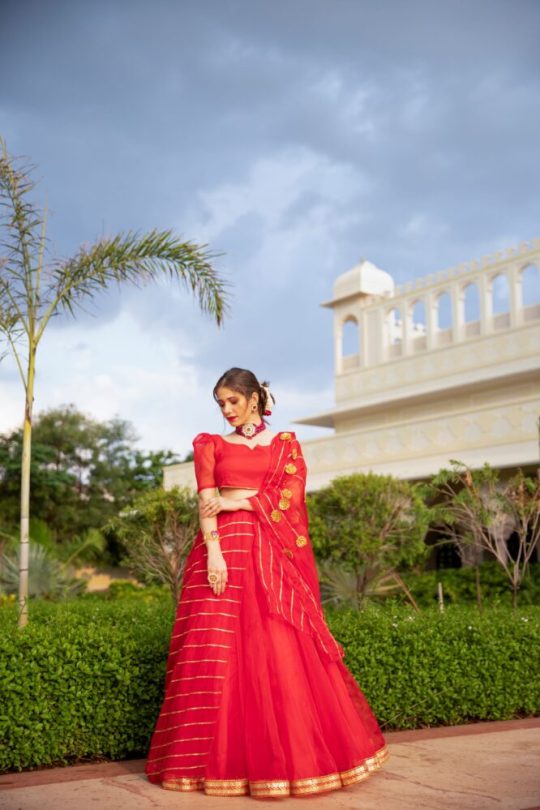
4. Mughal Style Lehenga
Mughal clothing alludes to attire created by the Mughals in the sixteenth, seventeenth and eighteenth hundreds of years all through the degree of their domain in the Indian subcontinent. It was portrayed by rich styles and was made with muslin, silk, velvet and brocade. Mughal style lehenga are best as they look marvelos in wedding days. Elaborate examples including spots, checks, and waves were utilized with colors from different colors including cochineal, sulfate of iron, sulfate of copper and sulfate of antimony were utilized.
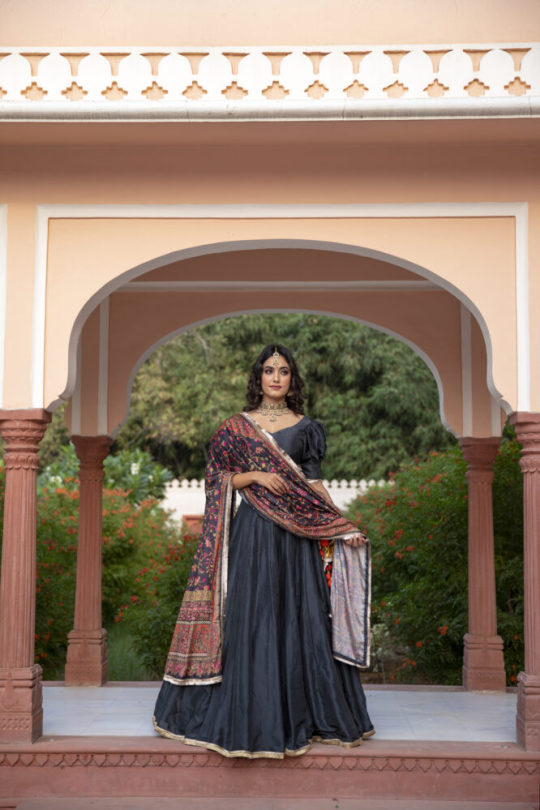
5. Straight Cut Lehenga
In straight cut lehenga, the skirt is long and straight in style, which has no kind of flare. One of the most favored decisions for lehenga is straight cut as a result of its flexibility on each body type. With straight cut lehenga, you can decide to wear a tank top style creator pullover.
6. Coat Style Lehenga
Obviously, there's nothing disparate in this sort of lehenga aside from the coat, which add an oomph variable to your whole couture and character. In coat style lehenga, there's a long free style coat, which has a complex weaving work with fine enumerating they are also called as Ethnic Lehengas for Women online. To appear to be unique and cheeky, get this style of Lehenga and have a durable effect on others.
7. Saree Style Lehenga
In this style of lehenga, there's a deception of a saree look, however it's really a lehenga. The deception of saree accompanies the hanging of the dupatta, which we typically do in saree. In any case, this is much better than saree as you can wear this style of lehenga serenely with practically no problem. Besides, the flare of this trendy lehenga is certainly good to beat all.
8. Framed Lehenga
Toward the finish of the flare in this lehenga, there are a few tasteful boards connected with it. The boards are utilized toward the finish of the hemline to build the volume of the flare as well as to add a differentiating plan for a stylish look. You can undoubtedly wear it on exceptional capabilities or at unique events.
If you're seeking for Women Shrug Sets online in India, come to our website where we provide several well-known and flattering styles of women's shrugs.
#Buy Latest Lehenga Online for Women#bandhej suit set#gotta work lehenga#Ethnic Lehengas for Women online#mughal style lehenga#Women Shrug Sets online India
0 notes
Text
History Behind Various Indian Fashion Trends

India is the second-largest textile and garment exporter in the World. Our textile industry is expected to have a net worth of $141 Billion by 2021. This can easily be observed by the amount, variety, and quality of Women’s clothes available in our markets. Like all major fields, Indian fashion and clothing too, have seen a lot of highs and lows and the fashion we see today is totally transformed than what we started with.
It is said history repeats itself and it is no different for fashion! Indian fashion is as ancient as the human civilization with a mix of regional, cultural, and historical influences. Vintage trends like bell bottoms, frills and trousers are once again making a comeback. It is thus evident that the fashion trends in India or anywhere else in the world always repeats itself in a decade or two bringing neoteric twists to the current fashion.
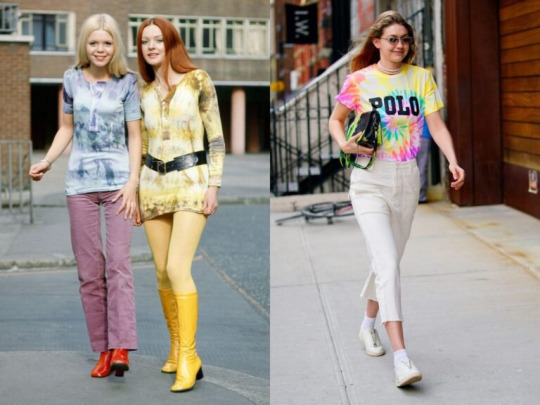
Ancient India

Ancient Indian clothing was mainly just cloth tied around various parts of the body. From the Sari to the turban and the dhoti to the Kurti, ancient Indian clothes were mostly wrapped around in various ways.
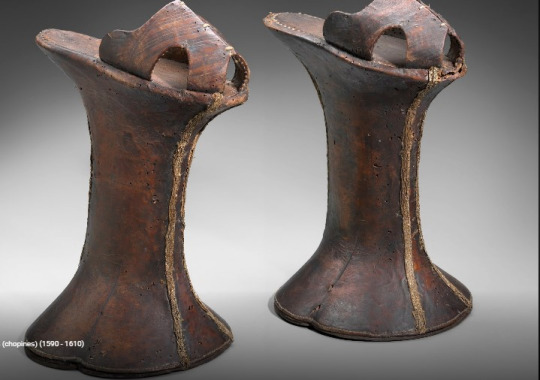
By the Aryan period, women wore one single long piece of simple unstitched cloth called a sari, that ranged around four to nine meters in length. Saris are first mentioned in the Vedas time period, which is about 600 BC. Generally, wealthy women wore saris made of exquisite materials like silk, but most women wore simple cotton ones. Not only the material of the cloth but also the way the wore it differed based on regions, religion, social status, etc.
Mughal Empire

By the 2nd century AD, the muslin clothes produced in the southern part of India were merchandised to the Roman Emperors. The evolution of stitched and tailored garments in India is traced even before the beginning of the 10th Century AD which was further proposed around the 15th century by the Muslim empires of India.
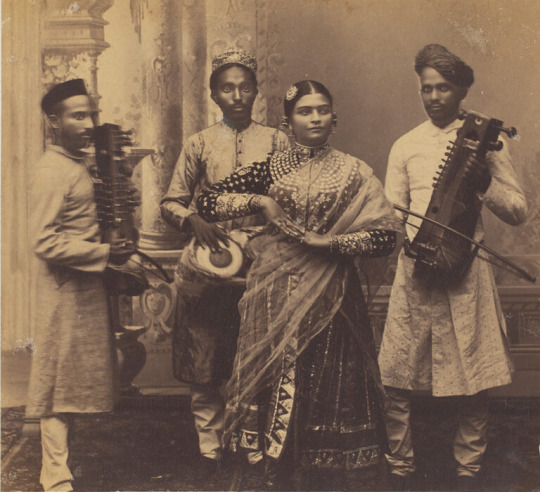
There were many different ways and styles to wear a sari at that time. To dress up, women wore them like skirts with a top part thrown over their shoulder or worn over their heads as a veil. Working women often used to wear pulled up the sari, cautiously pulled between their legs to make something like a sort of pants, which is still worn by women in Maharashtra. Women who were fighting with the armies in the Pre-British period tucked in the top part of their sari in the back for comfort and, to free up their arms for fighting. Younger women generally wore different types of brightly colored saris, while widows and other women who were in mourning wore strictly, only white ones.
British Era
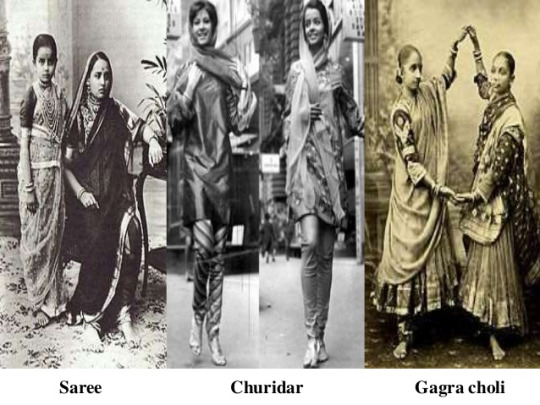
Sari, the versatile women’s clothing has been India’s trademark fashion style over the ages. Salwar Kameez and various other traditional ethnic clothes like the lehenga, sherwani, lugda, lungi, etc. and khadi clothes like the Nehru Jacket, etc. started out as our wardrobe staples. However, with the influx of the western world and British rule, Indians were exposed to western forms of clothing like skirts, dresses, gowns, blazers, tuxedos, trousers, and pants. As a result, the mix of these fashion elements resulted in a very unique style that is now the fashion image India projects to the World.
Post-British Period ( 1940s-1980s)

International trends and the British era also played a role in defining the way Indians dressed over the years. The 60s were ruled by heavy chunky ornaments, embroidered saris whereas the 70s saw a lot of bright colors, polka dots, bell-bottoms, and oversized sunglasses. India also went through a lot in terms of defining women’s rights, their own choices, and thus the shift from very understated shy traditional looks to modern bold choices.
The salwar was replaced by jeans, the kameez was replaced by tops and t-shirts. Instead of the traditional chikankari, benarasi, and other handcrafted fabrics, people started adapting more to types of denim and other westernized materials. Khadi, linen, and cotton which are materials more suited to our climate, were replaced by different types of exquisite materials like chiffon, satin which were in vogue.
Modern Period (1980s- present)
The modern period in fashion is largely influenced by Bollywood. With the advent of the Internet, TV, and other forms of media, Indian fashion was globalized and one-piece dresses, sportswear, halter tops, skirts, and floral gowns started becoming a common choice of clothing by the 90s. Shirts and trousers or T-shirt and Jeans were by this time already staple wear for Indian men. By 2000, the dawn of the modern era, a lot of regressive Indian practices were already shed, women secured their position to large extents, and became more independent and free-thinking.
Participating in the latest trends and styles, they also started going for bolder and more comfortable clothing like shorts, capris, jackets, shirts, and pants rather than opting for traditional ethnic clothes. We also witnessed the development of a uniquely Indian style, the Indo Western Fusion dresses, which combined the beauty and feminine salwar kameez with the comfort and practicality of the denim jeans. This combination has since then, ruled the hearts of college-going, working, old, young, almost every woman in India.
Here is a timeline of the most recent fashion trends in India, all by Bollywood. The trends as we know them today, in Indian fashion are a fusion of all the fashion trends in Indian history. British(western), Ancient fashion, which in itself includes a wide range of regional variations and the modern trends influenced largely by the west; is what we know as Indian clothing today. And this is what makes it the most different and sought industry with international interest in it. Also, not only Indian fashion is influenced by the west, with time Indian apparel too has been donned by the west and is now quite popular there.
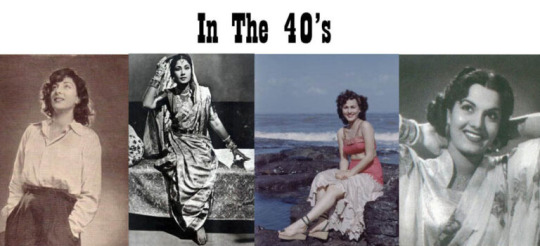

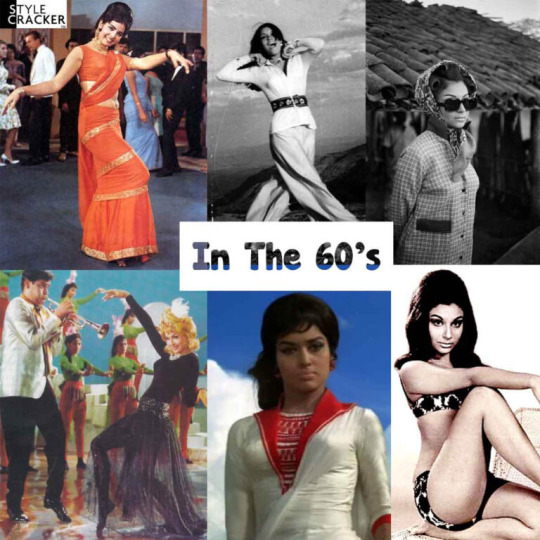
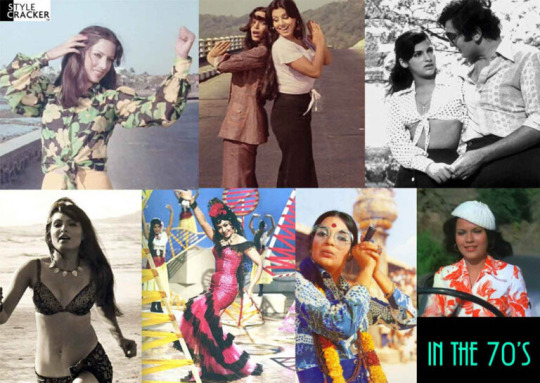

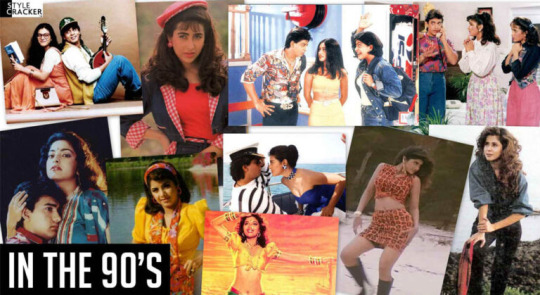

The market for the fashion industry in India, especially for women, is quite lucrative in terms of scope and variety. Today, while the rapid growth of information technology popularised the corporate look, the revival of the ethnocultural look has become quite dominant leading to the popularisation of the traditional forms of art and crafts. Of late, the International fashion brands have begun to focus on the immense potential of this sector offering heaps of opportunities to the in-house fashion designers. The Indian fashion industry has expanded to such an extent over time that it has now come at par with the international fashion industry and has become one of the most popular revenues generating industries of India.
Those are some of the top trends for the upcoming winter. Lehenga Cholis, Salwar kameez/Suits, or Sarees let us know which one you appreciated the best through tagging @yoyofashionindia or tweeting @YOYOFashionInd.
If you want to have a look at some of the designer ethnic collections for women online, you can check out at YOYO Fashion. We have a curated winter collection of designer saree, lehengas, salwar suits, and Kurtis at a very low price range. You will even get Sabyasachi replica Salwar Suits or Bollywood Salwar Suits Collection at affordable prices. Salwar Suits Online Shopping with FREE SHIPPING and cash on a Delivery option from YOYO Fashion will surely let you shop more.
AWESOME NEWS! YOYO Fashion is now Open! Get up to 50% off on all the super fun Sarees, Salwar Suits, Lehengas, Kurtis, and every kind of ETHNIC Wear!
#ancient indian fashion#indian clothing#fashion trends#moderntrend#ethnicfashion#ethnic clothing#ethnic wear for women#ethnicwear#sareeonline#onlineshopping
5 notes
·
View notes